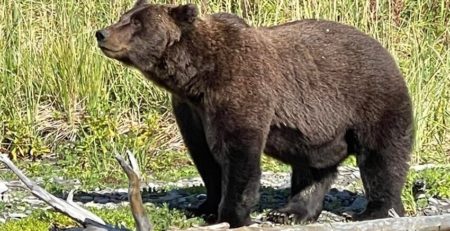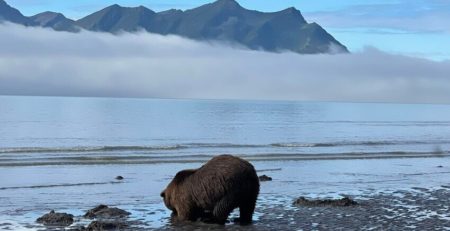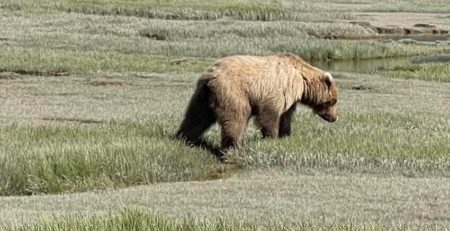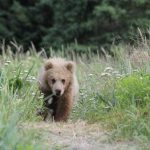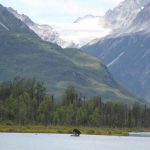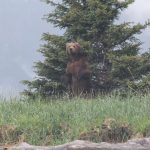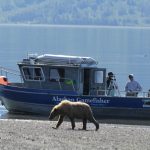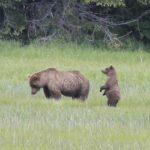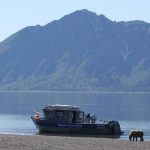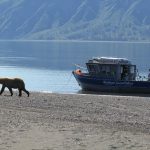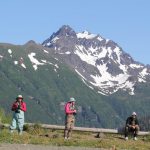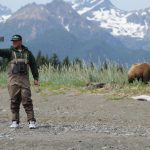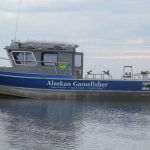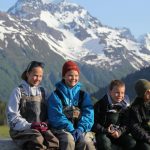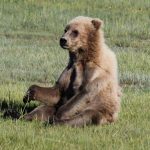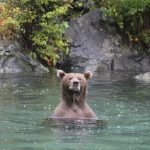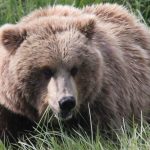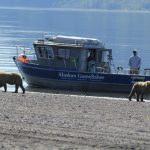Boat Upgrades for 2025
Exciting news for the 2025 season!
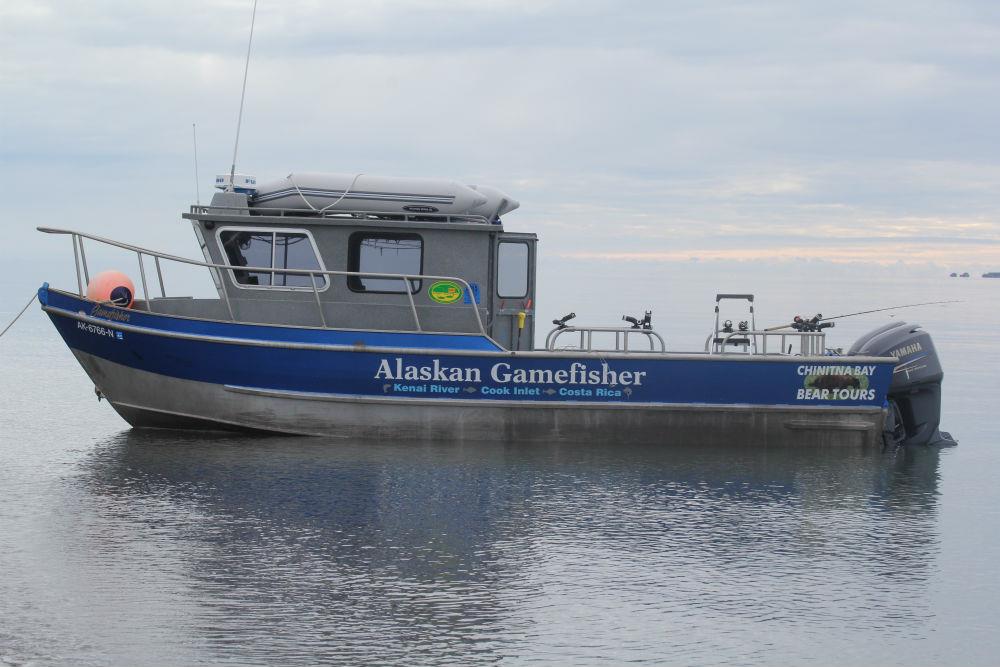
Our boat, The Alaskan Gamefisher, is getting some big improvements. We’re expanding the cabin to add an enclosed bathroom and more seating space to make trips even more comfortable.
We’re also adding special ladders to the front (bow) and back (stern) of the boat. This gives you three easy ways to get on and off the boat when we explore beaches and tide flats in the beautiful and remote western Cook Inlet at Lake Clark National Park.
These upgrades will help us access the entire coastline at any tide, making your trip smoother and more enjoyable.
We can’t wait for the 2025 season and look forward to helping you see plenty of bears!
Captain Mel Erickson
Once In A Lifetime Bear Viewing Experience in Alaska
Alaska bear viewing, We are the only commercial operator providing daily guided Alaska bear viewing trips by boat. May, June, July, August
You will depart from Anchor Point, Alaska near Homer & we will take you 38 miles across the beautiful Cook Inlet to Chinitna Bay in Lake Clark National Park. A short walk up the beach to a grassy marsh where several bears congregate to feed on the sedge grasses.
On any given day we see up to 20-30 brown bears, sows with new born cubs, big boars, bears fishing for salmon, or digging clams. If the tides are right & if you want we can dig up a few clams.
All this with a back drop of 5 active snow-capped volcanos in one of the most remote, & beautiful national parks in America. We also offer bear viewing trips by Alaska bush plane to other locations.
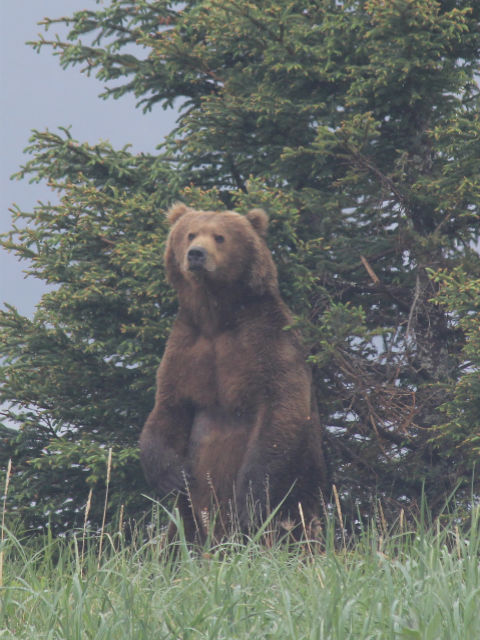
Prices for Bear viewing are $675 per person, which are $200-$300 less than an air taxi. Depart about 7 return about 3 Please visit our partner website at bearviewinginalaska.com
View Our Recent Bear Viewing Reports
Thinking about visiting the park's Cook Inlet coastline? This short film offers a spectacular introduction to what your day may include and how to stay safe and protect the park's bear populations.
Welcome To Chinitna Bay & Lake Clark National Park
Have a safe trip & be bear aware, be cautious and make noise as you travel to the marsh. Traveling on established trails reduces the chances of surprising a bear. Ensure all gear is on your person & do not leave unattended. Don’t Feed the wildlife, ensure food is properly stored at all times. A park ranger station is located 1 mile east of the bear viewing site.
Munching in the Marsh
The Chinitna Bay salt marsh is part of a unique, & small network of coastal marshes that provide critical early season nutrition for bears.
With their fat reserves depleted from a long winter hibernation, bears emerge from their dens in need of high protein. Fresh sedges in the salt marsh are the most important early season food source for coastal bears because they are available before the salmon arrive.
The geography of the Chinitna Bay marsh allows both females with cubs, & solitary males to feed through the May, & June mating season. Broad and open, it is a place where males can be seen approaching allowing mothers with cubs, & yearlings to retreat to the safety of the forest. A safe place to graze on rich sedge grass the Chinitna Bay marsh is critically important in the life of the bears.

Chinitna Bay
Chinitna Bay on Cook Inlets remote west side was home seasonal camps & winter settlements. The remains of sod covered houses dug partially underground, may look like simple vegetation covered depressions but from them archeologists can often piece together the story of family life and identify tools used, food eaten, and how long they were used. Each home had a central room with a hearth from which attached rooms for individual living space, sweatbaths, and food storage radiated.
The Remote Shore of Chinitna Bay
Land of Two Worlds
For at least 3,000 years & probably much longer, the remote west shore of Cook Inlethas been a place of gathering for fishing, clamming, sea mammal hunting, & ritual. Along this shore ancient cultures overlapped. People from inland Lake Clark country and those from across Cook Inlet came to hunt, fish, & gather food. Though neither group established large & long term settlements here. Earlier this shore was a fluid cultural frontier between Lake Clark interior groups, & maritime societies based in the Kodiak island region.
Archaeologists have found settlements of one to eight dwellings scattered along the shore of Chinitna Bay. The largest near the bear viewing site was briefly inhabited less than 300 years ago. These may have been the Dena’ina who paddled to the mouth of the Chinitna Bayin May of 1778 to meet Captain James Cook, for which the Cook Inlet is named.
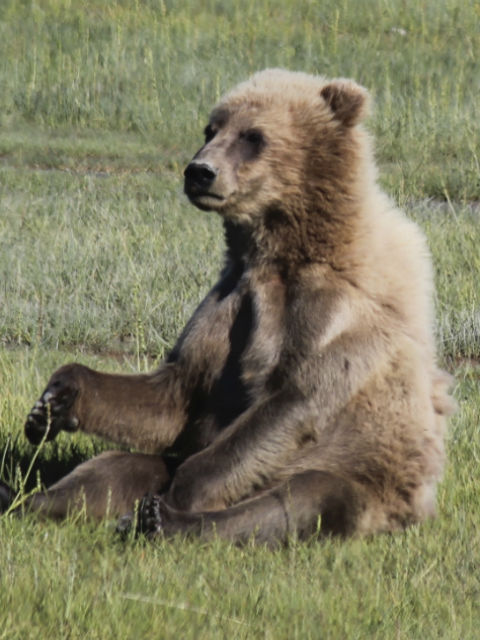
Regulations
Welcome to Katmai National Park
There is no road access to Katmai National Park, & the main departure point for visits to Katmai is from Homer on the Kenai Peninsula.
Katmai was established in 1918 to protect the volcanically devastated region surrounding Novarupta and the Valley of Ten Thousand Smokes. Today, Katmai National Park and Preserve also protect 9,000 years of human history and important habitat for salmon and thousands of brown bears.
Katmai National Park and Preserve is on a peninsula in southern Alaska. Its wild landscapes span tundra, forests, lakes and mountains. The park is known for the many brown bears that are drawn to the abundant salmon in Brooks Falls. Lookout platforms at adjacent Brooks Camp offer close-up views of the bears. The Valley of Ten Thousand Smokes is an area of lava flows and ash formed by a massive volcanic eruption.
Weather
Weather at Katmai is variable, though reliably rainy or drizzly. Summer high temperatures average in low 60’s. The park supports 29 mammal species, 137 bird species, & 5 salmon species.
Species
Mammal species that inhabit Katmai include snowshoe hare, moose, wolf, brown bear, coyote, beaver, lynx, wolverine, river otter, mink, red fox, porcupine, and marten. Marine mammals include the harbor seal, sea lion, sea otter, beluga whale, killer whale and gray whale.
The most important fish in the park are sockeye salmon, which feed bears, bald eagles and others during their spawning runs in the park’s rivers. Salmon enter in June and July and spawn from August to October.
Other activities besides Bear Viewing at Katmai include hiking, backpacking, camping, fishing, kayaking, boat tours.
Bear Watching In Katmai Nation Park
Katmai is also well known for Alaskan brown bears and the sockeye salmon which attract both bears and people. Katmai contains the world’s largest protected brown bear population, estimated to number about 2,200. Bears are especially likely to congregate between Mid May, & mid-September, 40 to 70 individual bears have been seen is a single day.
The coastal areas such as Hallo Bay, Kukak Bay, Kuliak Bay, Kaflia Bay, Geographic Harbor and Chiniak Bay have very high population densities of bears year-round, due to the availability of clams, and coastal sedge as well as salmon and other fish. Other hotspots include Swikshak Lagoon, American Creek, and in the preserve, Moraine Creek and Funnel Creek.
Katmai National Park and Preserve offer spectacular bear viewing opportunities.
When most people envision Katmai, they think of bears. Katmai is one of the premier brown bear viewing areas in the world. More bears than people are estimated to live on Alaska Peninsula.
As many bear populations around the world decline, Katmai provides some of the few remaining unaltered habitats for these amazing creatures. At Katmai, scientists are able to study bears in their natural habitat, visitors are able to enjoy unparalleled viewing opportunities, and the bears are able to continue their life cycle largely undisturbed.
Katmai’s success as a bear-viewing destination
It is important that when visiting Katmai to respect bears and go with a professional bear guide with the knowledge to stay safe in bear country. The urge to take the perfect photograph or maintain the best fishing hole with your fly rod can be strong, but bears need space to sleep, eat, rest, travel, and play. By recognizing the needs of the bears and giving them space, each of us plays a role in keeping bears wild

